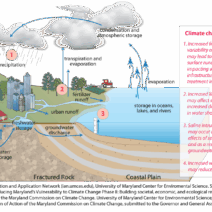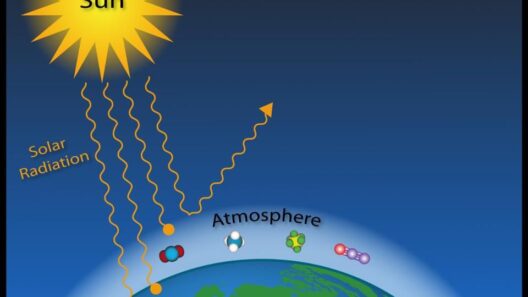Understanding the interplay between solar flares, solar energy fluctuations, and global warming requires a comprehensive exploration of astrophysics, climate science, and Earth’s environment. Solar flares, sudden bursts of radiation from the sun’s surface, have captivated scientists for decades due to their potential impacts on Earth. This discourse delves into how these solar phenomena influence climate change and global warming.
Solar flares occur when magnetic energy built up in the solar atmosphere is released. They can emit radiation across the electromagnetic spectrum, including ultraviolet, X-rays, and gamma rays. While it might be tempting to correlatively link solar flares with climate phenomena on Earth, it is essential to delineate the varying misconceptions surrounding solar activity and its direct impacts on climate change.
One key aspect to consider is the sun’s role as the primary driver of Earth’s climate. The amount of solar energy reaching our planet fluctuates due to several factors, including the sun’s cycle of activity, which typically spans approximately 11 years. During periods of heightened solar activity, also known as solar maximum, the sun produces more sunspots and solar flares. Conversely, during solar minimum, these activities diminish.
While solar maxima contribute to increased solar irradiance, the extent of this influence on Earth’s climate is minimal compared to the larger trends induced by anthropogenic factors. The most significant driver of current global warming is the augmentation of greenhouse gases in the atmosphere, primarily carbon dioxide, due to burning fossil fuels, deforestation, and industrial activities. Analysis indicates that the contribution of all solar influences combined has only a fraction of the overall impact on climate change.
To grasp the limited role of solar activity, it is imperative to examine the scale of energy involved. The total solar irradiance, which refers to the energy emitted by the sun, has increased slightly during periods of high solar activity. However, this increase is measured in fractions of a watt per square meter. In contrast, the human-induced climate change effect is on the order of several watts per square meter, establishing a stark contrast in compelling climate effects.
Moreover, solar flares can affect terrestrial communications and electronic systems, leading to disruptions in GPS signals and power grids rather than having a direct and expansive impact on the climate itself. Though solar flares might pose risks to technological systems, their contributions to climate fluctuations are almost negligible.
Encouragingly, harnessing solar power presents a sustainable avenue to mitigate the impacts of climate change. Solar energy systems utilize photovoltaic cells to convert sunlight into electricity, emphasizing a path toward renewable energy that does not rely on fossil fuels. This has the complementary effect of reducing greenhouse gas emissions and curbing global warming trends. The intersection of utilizing solar energy and reducing dependency on carbon-intensive resources illustrates a proactive approach to ameliorating climate change.
Investigating the link between solar activities and climate requires scrutinizing variations in solar irradiance over geological time scales. Historical records have shown fluctuations in climates, such as the Medieval Warm Period and the Little Ice Age, where naturally occurring variations led to observable changes. However, careful consideration indicates that these cyclic alterations should not overshadow the evidence of rapidly accelerating climate change observed since the late 20th century.
Furthermore, research indicates that while solar activity can modulate climate on longer time scales, current models suggest that its contribution does not align with the observed increases in global temperatures over the past century. This contradiction decisively supports the stance that anthropogenic factors remain the predominant catalysts driving global warming.
To effectively combat climate change, it is vital to prioritize the implementation of renewable energy sources, such as solar and wind energy. The scaling of photovoltaic technology and its integration into the energy grid represents a critical solution to diminish reliance on fossil fuels. Transitioning to renewable energy is not only beneficial in curbing emissions, but it also promotes energy security and economic resilience.
In conclusion, the notion that solar flares or fluctuations in solar power exert a significant influence on global warming lacks substantial empirical support. The evidence uniformly emphasizes the preeminence of human activities in propelling climate change. As discussions regarding solar energy prevalence advance, it underscores the importance of transitioning to low-carbon alternatives, thus ensuring a sustainable future. The synergy between addressing climate imperatives and promoting renewable energy forms the crux of combating this global challenge. To secure the health of our planet, recognizing the insignificance of solar influences in the context of present climate change discussions is vital. The focus must remain on proactive measures that mitigate greenhouse gas emissions and enhance the use of renewable energy sources for a sustainable and habitable Earth.






